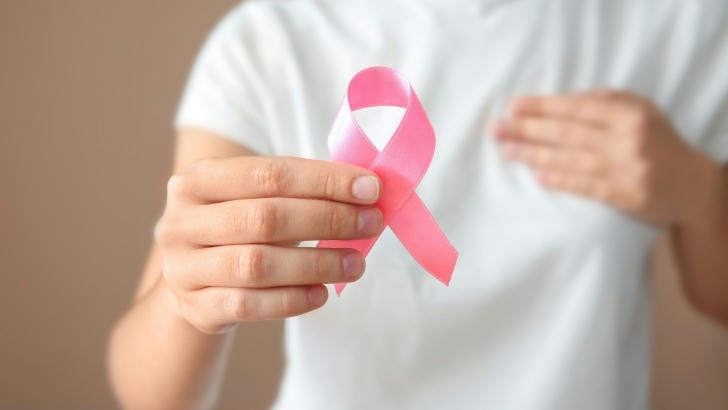Early Warning Signs of Breast Cancer You Shouldn’t Ignore
Breast cancer is one of the most common cancers affecting women worldwide, but early detection can significantly improve survival rates. The key to early detection lies in recognizing the warning signs and understanding the risk factors. This article outlines the symptoms, risk factors, and shares a real-life example to help you identify potential signs of breast cancer early and take action.
Common Early Symptoms of Breast Cancer
The symptoms of breast cancer vary, and some cases may show no obvious signs. However, the following are some common early warning signs that should not be overlooked:

Lump or Thickening in the Breast or Underarm
One of the most common early symptoms of breast cancer is the presence of a lump or thickening in the breast or underarm area. While not all lumps are cancerous, it’s important to have any new or unusual growth evaluated by a healthcare provider.
Changes in Breast Size or Shape
Any noticeable changes in the size or shape of one or both breasts could indicate an underlying problem. Swelling, shrinkage, or distortion that isn’t linked to your menstrual cycle is worth investigating.
Skin Changes on the Breast
Changes in the texture or appearance of the breast skin, such as dimpling, redness, or scaling, may signal breast cancer. These symptoms could mimic an infection but should be checked by a doctor if they persist.
Nipple Discharge
Any unexpected discharge from the nipple, particularly if it is bloody or occurs without squeezing, could be a warning sign of breast cancer and should be evaluated promptly.
Pain in the Breast or Nipple
While breast pain is not usually a sign of cancer, persistent pain or discomfort in the breast or nipple area should not be ignored, especially if it’s accompanied by other symptoms.
Inverted Nipple or Changes in Nipple Appearance
A nipple that turns inward or changes shape or texture unexpectedly might indicate an issue that warrants medical attention.
Risk Factors for Breast Cancer
Although breast cancer can occur in individuals without any apparent risk factors, certain conditions increase the likelihood of developing the disease:

Family History: A strong family history of breast or ovarian cancer increases your risk, especially if a close relative was diagnosed at a young age.
Age: Most cases of breast cancer occur in women over the age of 50, though younger individuals can also be affected.
Genetic Mutations: Inherited mutations in the BRCA1 and BRCA2 genes significantly raise the risk of breast cancer.
Hormone Replacement Therapy (HRT): Prolonged use of HRT has been linked to an increased risk of breast cancer.
Lifestyle Factors: Lack of exercise, excessive alcohol consumption, and obesity contribute to higher risk levels.
Dense Breast Tissue: Dense breasts have more glandular and connective tissue, which can make detecting cancer on a mammogram more difficult and may increase the risk.
Real-Life Example: Emma’s Story

Emma, a 42-year-old teacher, noticed a small lump in her left breast during a routine self-examination. Initially, she thought it was related to her menstrual cycle and didn’t seek immediate medical attention. However, a few weeks later, she noticed the lump had grown and her breast felt unusually tender.
Concerned, Emma scheduled an appointment with her doctor, who performed a clinical breast exam and recommended a mammogram. The imaging revealed an abnormal mass, and a subsequent biopsy confirmed it was early-stage breast cancer. Because Emma caught it early, her doctor was able to recommend a treatment plan involving surgery and radiation, sparing her from more aggressive interventions.
Today, Emma is cancer-free and an advocate for regular self-exams and early detection. Her experience highlights the importance of paying attention to subtle changes in your body and seeking medical advice without delay.
Why Early Detection Matters
When breast cancer is detected early, the chances of successful treatment are much higher. Screening methods such as mammograms, clinical breast exams, and self-examinations play a crucial role in identifying potential issues before they become life-threatening. Regular screenings are especially important for individuals with higher risk factors.
If you notice any changes in your breasts or experience symptoms like those listed above, consult a healthcare provider promptly. Early intervention can mean the difference between a manageable diagnosis and one that is more advanced and difficult to treat.
Conclusion
Breast cancer is a serious condition, but early recognition of symptoms and regular screenings can save lives. By being vigilant about changes in your body and understanding your personal risk factors, you can take proactive steps toward protecting your health. If you suspect any warning signs, don’t hesitate to seek medical advice. Your health is worth it—early action can make all the difference.
